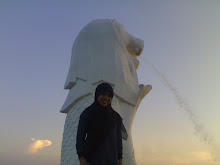Plagiarism and falsified data slip into the scientific literature: a report Scientific inquiry recently got a big black eye, as fraudulent data and p
The challenges of scientific integrity
Scientific progress is conveyed primarily through peer-reviewed publications. These publications are the primary source of information for everyone involved in scientific research, allowing them to understand the current scientific models and consensus and making them aware of new ideas and new techniques that may influence the work they do. Because of this essential role, the integrity of the peer review process is essential. When misinformation makes its way into the literature, it may not only influence career advancement and funding decisions; it can actually influence which experiments get done and how they are interpreted. Bad information can also cause researchers to waste time in fruitless attempts to replicate results that never actually existed.
Despite the danger represented by research fraud, instances of manufactured data and other unethical behavior have produced a steady stream of scandal and retractions within the scientific community. This point has been driven home by the recent retraction of a paper published in the journal Science and the recognition of a few individuals engaged in dozens of acts of plagiarism in physics journals. Ars has interviewed a number of the people involved in both of these cases, and we discuss their impact on the field and the prospects for preventing similar problems in the future.
Plagiarists run amok
Recently, Ars was informed that a number of papers with a set of overlapping authors were being withdrawn from the arXiv, a repository of publications and drafts in the physical sciences. We confirmed that several papers were no longer available and that their entries now lead to text that states, "This paper has been removed by arXiv administrators because it plagiarizes... " followed by a list of the sources of the plagiarized material (an example is here).
In at least one case, the final publication had been withdrawn but an earlier draft version was still available. Comparisons of the text (PDF) with the sources it was plagiarized from reveal the blatant nature of the fraud. Section 1 of that paper begins with an extensive copying of the introduction of a 2003 paper (PDF; copying starts with the second sentence of the introduction). Section 3 of the fraudulent work begins with a similarly large excerpt from the introduction of a different publication (PDF) that also dates from 2003. Although the arXiv has acted on the plagiarism, the fraudulent publication currently remains available at the Journal of High Energy Physics.
Ars contacted an arXiv administrator, who put us in touch with faculty at the Middle East Technical University in Ankara, Turkey, home of the authors of the fraudulent publications. Dr. Ozgur Sarioglu spoke on behalf of a group of METU faculty that also included Atalay Karasu, Ayse Karasu, and Bayram Tekin. They provided a PDF of the Journal of High Energy Physics article, marked up to reveal the source of much of the text. It contains material from at least a dozen different peer-reviewed works; the original material seems limited to a majority of the abstract and a limited number of mathematical derivations that rephrase equations published elsewhere.
According to Dr. Sarioglu, two of the authors of this paper were graduate students with a prodigious track record of publication: over 40 papers in a 22-month span. Dr. Karasu, who sat on the panel that evaluated their oral exams, became suspicious when their knowledge of physics didn't appear to be consistent with this level of output. Discussions with Dr. Tekin revealed that the students also did not appear to possess the language skills necessary for this level of output in English-language journals (METU conducts its instruction in English).
This caused these faculty members to go back and examine their publications in detail, at which point the plagiarism became clear. "All they had done was literally take big chunks of others' work using the 'copy and paste' technique," Dr. Sarioglu said, "steal from here and there to cook up an Intro which is basically the same stuff in all their manuscripts, carry out some really trivial calculations such as taking derivatives of some simple functions, and write up the results in the format of a paper." The department chair was informed and started an internal investigation; the university's Ethics Committee has since become involved.
In the mean time, the faculty and administration at METU are attempting to do some damage control. The university's president personally sent a letter to the Journal of High Energy Physics requesting that the paper be withdrawn—a request that, as noted above, has yet to be acted upon. Meanwhile, the faculty members mentioned above are working with the arXiv administrators to ensure that any plagiarized work is removed.
How will this impact the field? Professor Paul Ginsparg at Cornell, who helped establish the arXiv, suggests that the impact will be minor. Because the fraudulent work was necessarily so derivative, it did not have a high profile or influence. "There's little effect on science," Dr. Ginsparg said, "since the people who produce high quality work don't need to plagiarize, and the people who do need to plagiarize don't produce high enough quality work to affect anything." Sarioglu is less sure, as the full extent of the plagiarism remains unclear. Most of the publications had additional authors beyond the two graduate students at the center of the scandal, and the investigations are just beginning to explore the larger connections. "All the work they had published on gr-qc [general relativity-quantum cosmology] plagiarizes something. Looking into these things we also found other cases—there are about 20 people who we know are plagiarizers."








0 Response to "Plagiarism and falsified data slip into the scientific literature: a report Scientific inquiry recently got a big black eye, as fraudulent data and p"
Posting Komentar